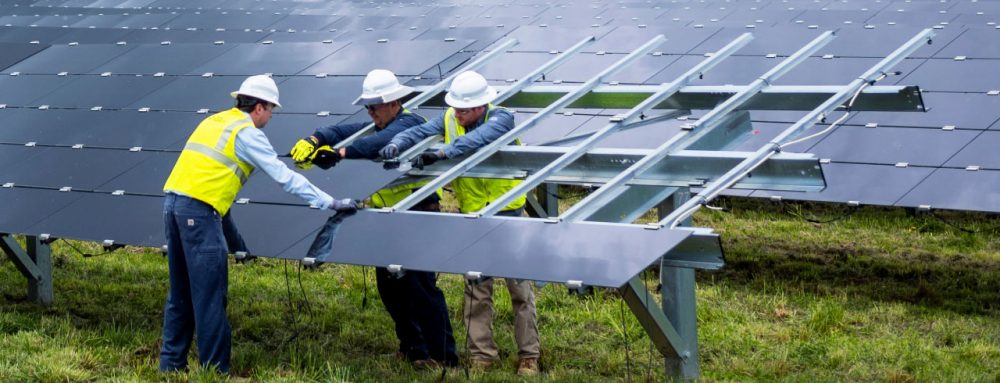North Carolina legislation promotes new rate-making tools for state utilities commission

North Carolina legislators will soon decide if the state’s Utilities Commission will wield new, modern rate-making tools, tools that may influence whether Duke Energy Corp. and other electric utilities can implement multi-year rate plans for consumers.
Duke Energy officials, who helped craft the provisions in Senate Bill 559, say these rate plans will help ease the company’s costs for storm recovery and allow for grid upgrades. Rather than seek approval with the Utilities Commission year-by-year for these expenditures, the Commission could now allow the company to adopt three-year spending plans.
“Duke Energy feels S.B. 559 is sound policy that benefits North Carolinians by providing the North Carolina Utilities Commission new tools to use at their discretion to set fair rates and to ensure everyone pays the lowest price possible for smarter, stronger, cleaner energy,” said Grace Rountree, spokesperson for Duke Energy.
S.B. 559 has already passed the North Carolina Senate, House Finance Committee, the House Energy and Public Utilities Committee, and the Rules Committee. The next step would be a House Floor vote.
Multi-year rate plans establish up front procedures and mechanisms to manage future operations. These plans are always started in a full base rate case and utilities would have to demonstrate that it is in the public interest. Duke Energy would present its investments and the Utilities Commission would then determine if those investments are fair and reasonable to charge customers. Rountree says multi-year rate plans do not automatically ensure that rates increase year after year. The plans would be limited to known and measurable capital investments and their associated expenses.
Duke Energy would seek support from stakeholders before proposing any multi-year rate plan to the Utilities Commission, Rountree adds. These stakeholders would include public staff, industry experts, tech customers, environmental groups, and other community members who normally participate in traditional base rate cases.
Among the other mechanisms the Utilities Commission could use is a storm securitization tool. Securitization is a financing option that works when AAA-rated bonds are issued in the financial markets and the proceeds are then used to pay for storm-related expenses. In 2018, North Carolina suffered two back-to-back hurricanes and a winter storm and Duke Energy incurred $700 million in costs from those weather events. If the securitization option were to be approved by the Utilities Commission, customers could save 15 to 20 percent on storm recovery costs. S.B. 559 gives state regulators more ways to ensure the lowest possible price for energy, Rountree says.
S.B. 559 also mandates that the utility invest any earnings above the established midpoint to high end of the approved return on equity (ROE) band to help low-income customers and communities with affordable housing, infrastructure projects, and economic development needs. Should the utility exceed a band limitation, there would be an automatic refund or credit to customers, Rountree says.
“It does not raise rates,” the bill’s main sponsor state Sen. Dan Blue told the Raleigh News and Observer. “It does not give sole benefit to Duke Energy. If you take Duke Energy out of the equation, you probably wouldn’t have this discussion…the concepts in this bill are not controversial at all.”
Sen. Blue referred to critics who accuse Duke Energy of backing this legislation to increase profits and to pass through grid improvement costs and other projects such as coal ash management automatically to customers. The company has responded by saying these new tools would allow it to improve planning.
Mechanisms such as those outlined in S.B. 559 are already available in more than 35 states, Rountree adds. And a 2016 National Regulatory Research Institute report says supporters of multi-year rate plans for utilities in the United States point to six benefits:
• More predictable revenues for utilities, bolstering their financial health;
• Spreading of rate increases over a longer period;
• More predictable rates for customers
• Stronger performance incentives;
• Fewer general rate cases over time; and
• Timely recovery of costs for new capital projects.
The last point may be relevant to Duke Energy’s grid improvement plan. The company originally announced a 10-year, $13 billion initiative which was denied by the Utilities Commission. The company has gone “back to the drawing board” to revise the original plan to a three-year initial phase at $1.7 to $2.5 billion, Rountree says.
“The commission told us in their ruling last year that this grid improvement work is really important for our state,” she said. “We’ve been working with our stakeholders to revise that plan.”
